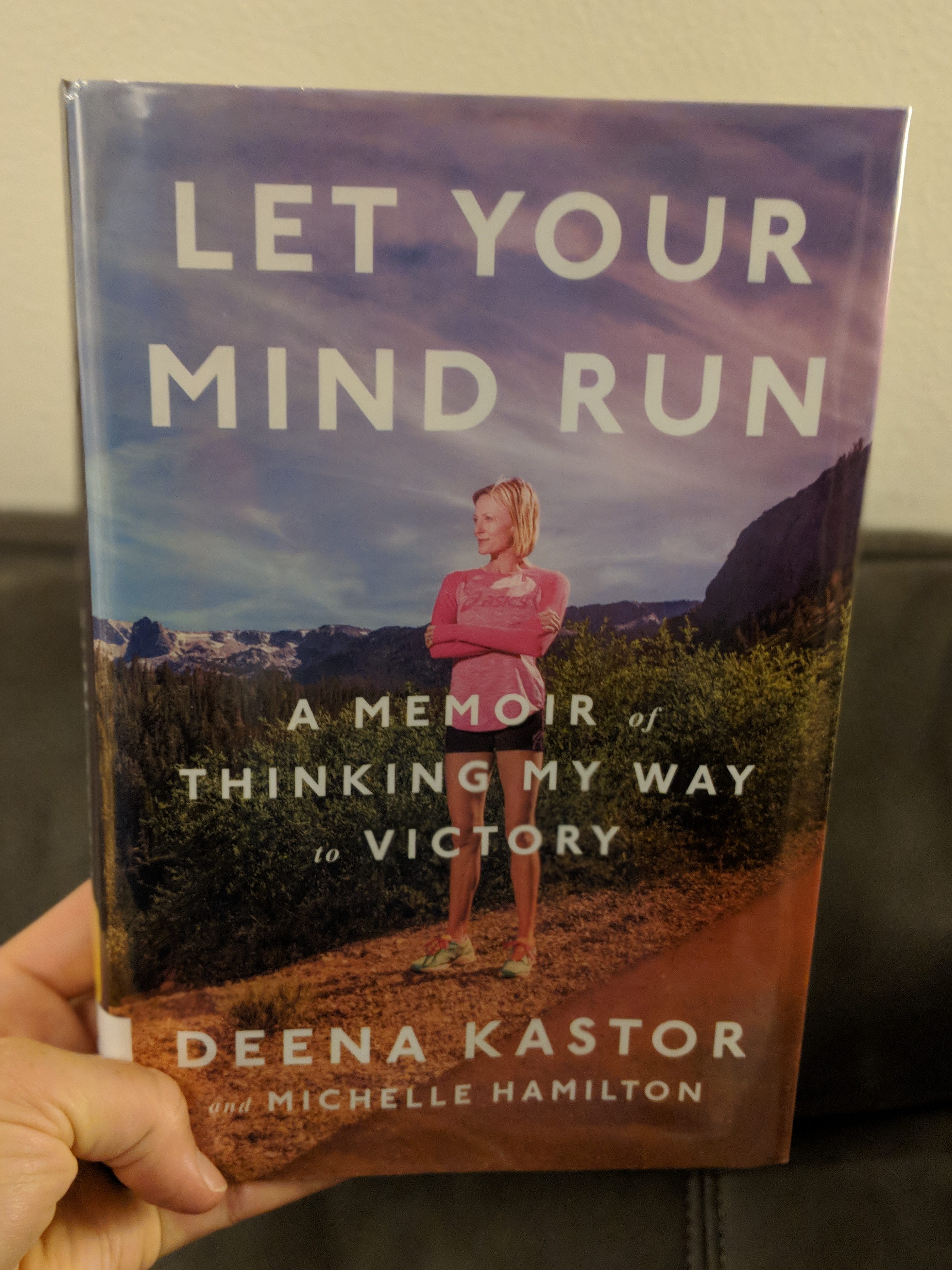2018 Splash 2 Dash youth triathlon race recap – guest post from my seven year-old – Morgan Hill, CA
In late April, my eldest raced her first triathlon in 2018, the Splash 2 Dash youth triathlon in Morgan Hill, just a little ways south of San Jose. She was fresh off a kids’ run at the Silicon Valley Food Truck 5k a few weekends prior, though she hadn’t done a triathlon since last summer’s Santa Clara kids’ triathlon in August.
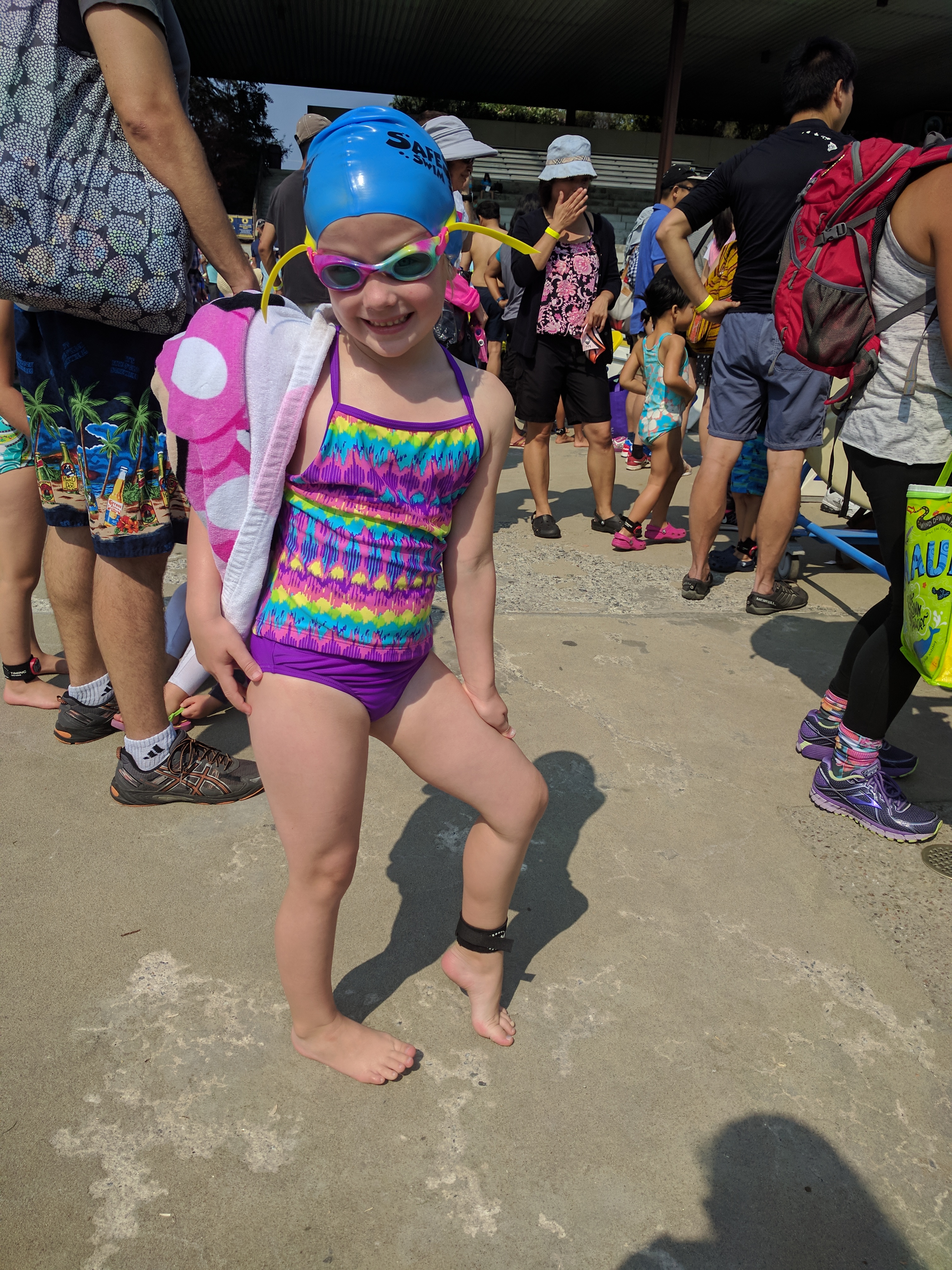
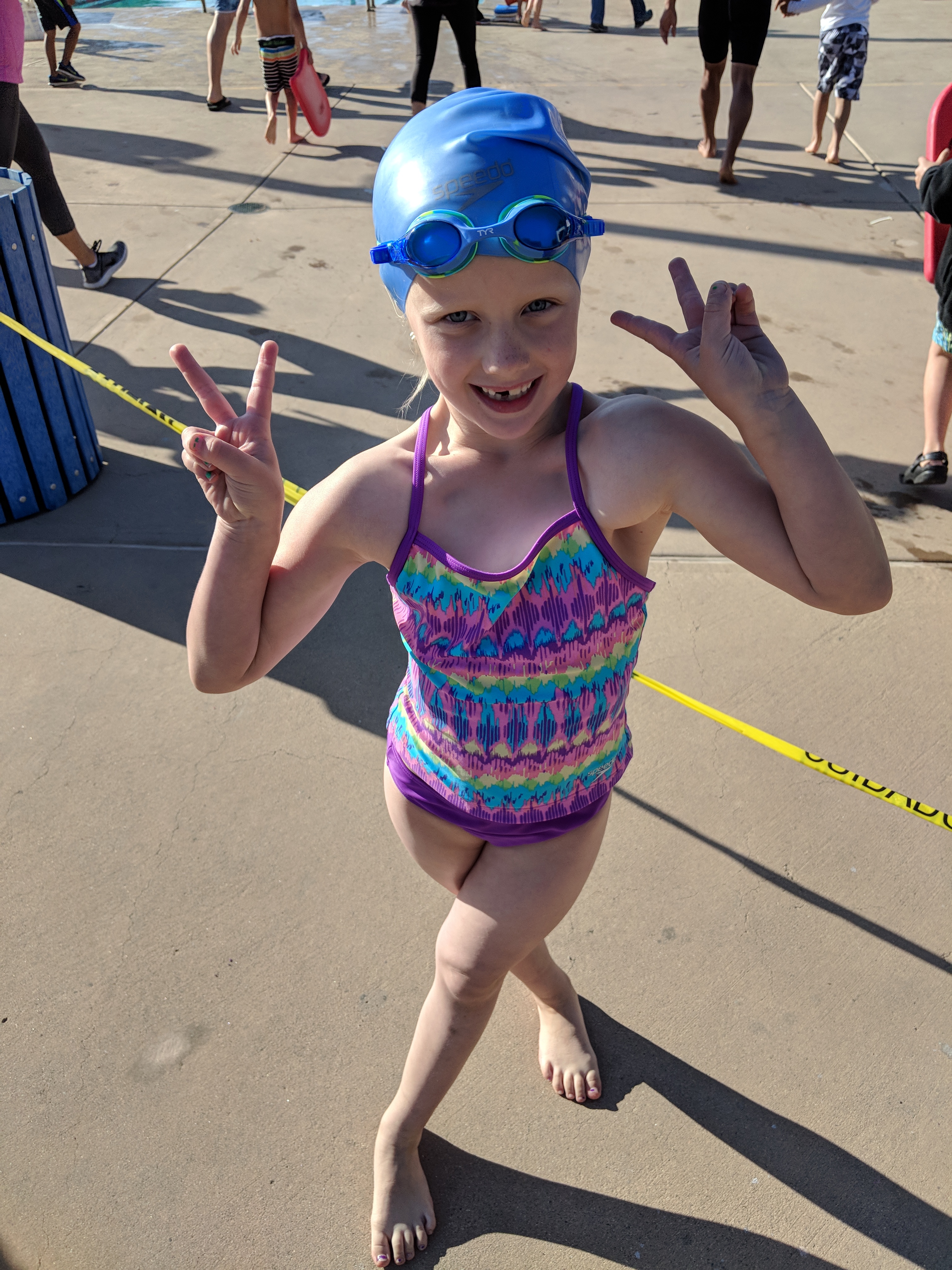
Honestly, after the SC triathlon, I wasn’t sure that she’d want to do another triathlon because she didn’t particularly care for the running part of the event. It’s cool; I’m not really into pressuring her to do this type of stuff. That said, when I asked if she wanted to do the MH triathlon, she enthusiastically wanted in. Even better, Saraubh’s son was also going to do to the MH tri, so the kids would be able to play and hang out before and after the event. That seemed to seal the deal for my daughter.
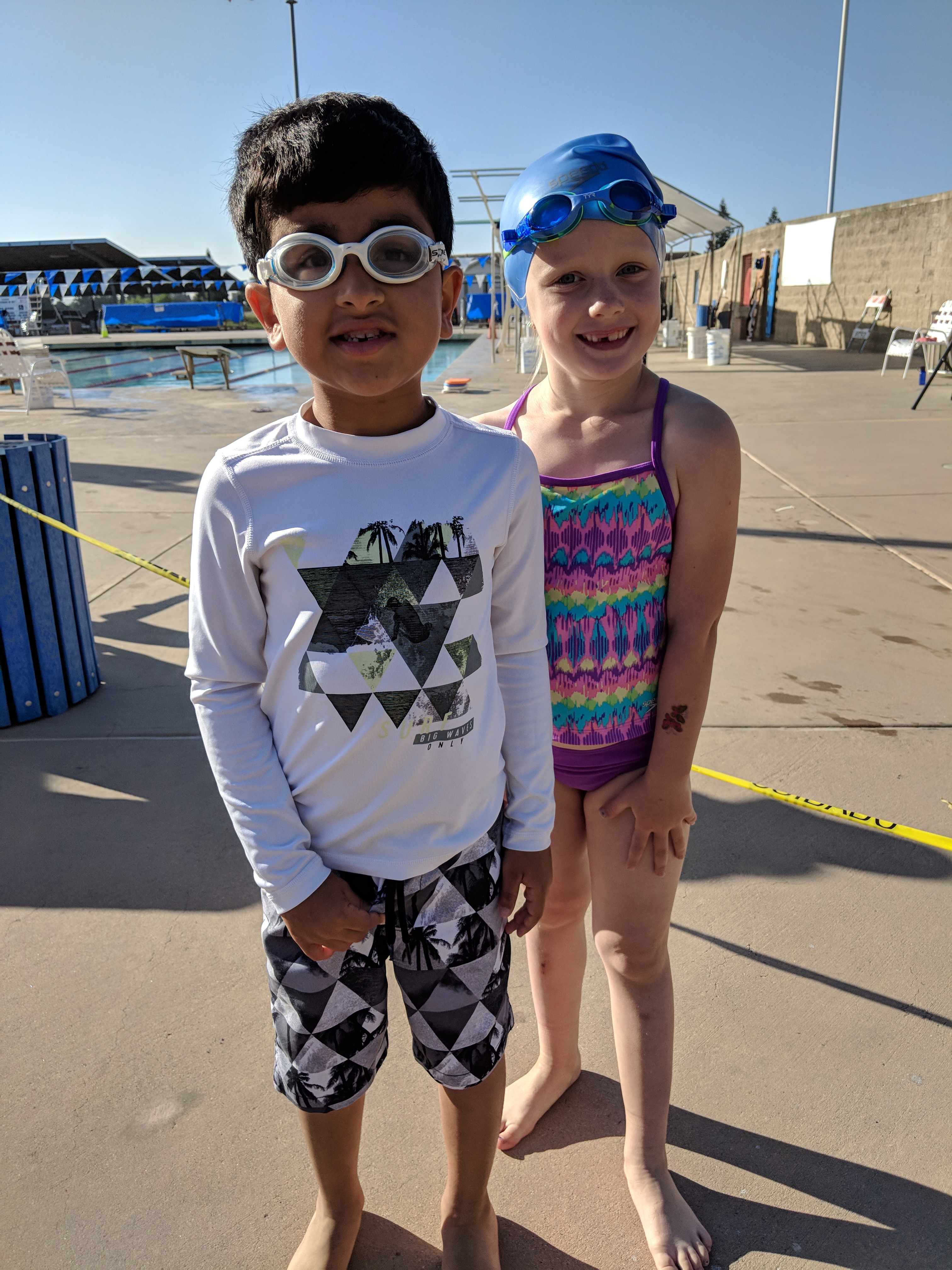
There were some big differences between the SC triathlon last summer and the MH triathlon in April. I’ll include my interview notes with my daughter here in a second — gotta keep those primary sources whenever possible, right — but for the parents in the area who are looking for information about the event, or how they compare to each other, anyway, I’ll elucidate on some details below.
Distance
The MH triathlon, like other youth tris I’ve read about online, offers staggered distances and start times for the kids. At the time, my daughter was six, the youngest age group, so accordingly, she had the shortest distances of the day and was the last group to compete. Her distances included one length of the pool, a 1 mile ride, and a ½ mile run.
On race day, there was a little bit of confusion though because it looked like the ride was longer, based on a discrepancy between email communications and the website, making it maybe closer to 1.5 miles. At any rate, the kids didn’t seem to complain. The transition areas were in a parking lot, very near the pool, and the ride was through the large aquatics center campus. The run for her age group was an out-and-back in a field on the campus. Everything was pretty close together and closed off to vehicular traffic, as much as I could tell.
For the six-and-unders and the seven year-old age groups, the race divided the boys and girls into separate heats, but for the older groups, boys and girls were co-mingled.
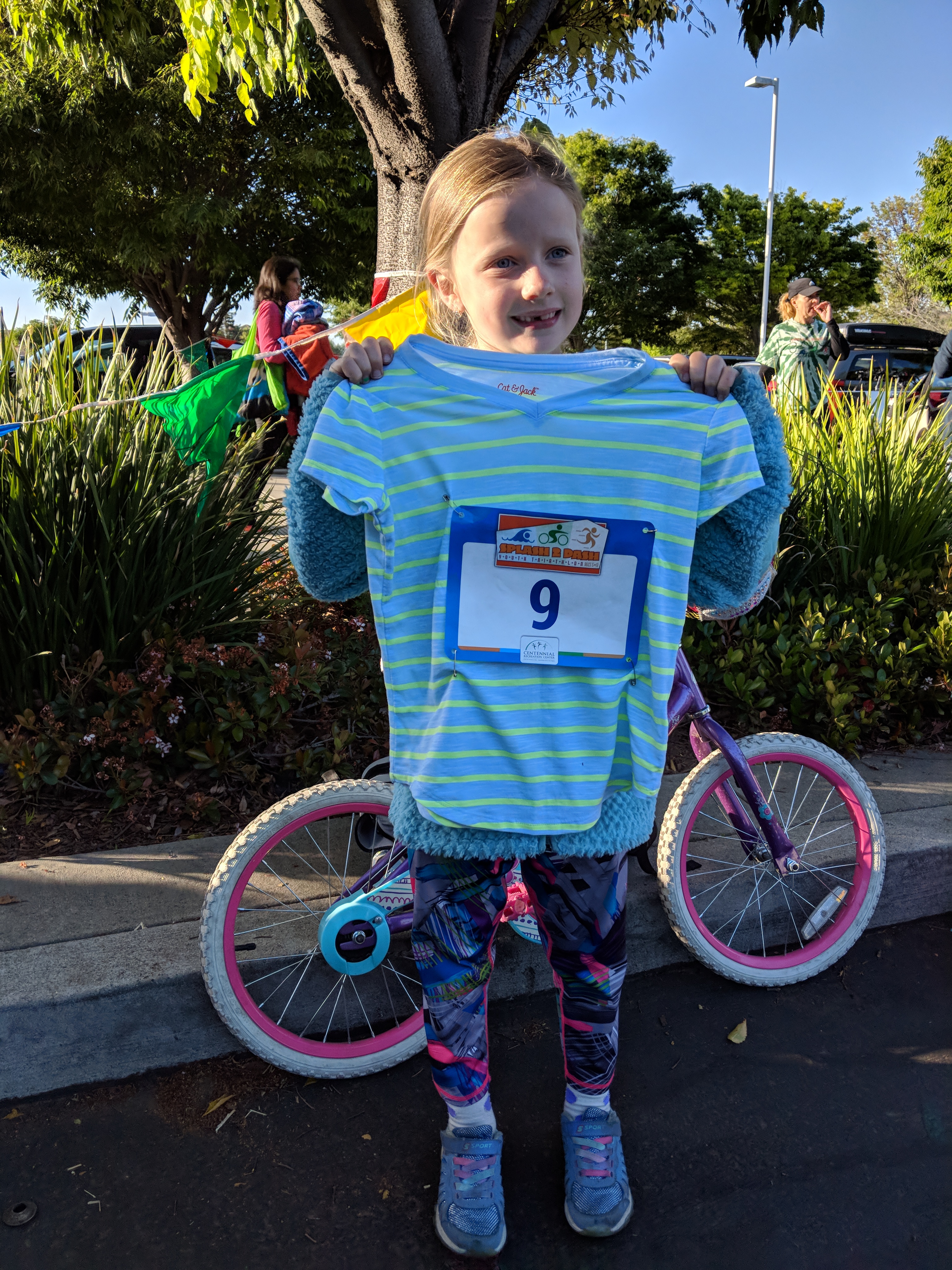
Field size
When my daughter did the SC triathlon last summer, the event seemed huge, with easily over 100, if not 200, child participants. Since that was our first foray into triathlons, it was pretty overwhelming, to be honest. Giving ourselves an hour to park, set up transition, get bib numbers, and figure out where we needed to be was barely enough time, and I felt like we were scrambling the entire time.
In comparison, the MH Splash 2 Dash was much more low-key. There were 50, maybe 70 participants total, and each age group only needed one heat to begin their race (save for the littlest ones who were segregated by sex). All the logistics of the morning — parking, setting up transition, getting bibs, yadda yadda yadda — were much easier to handle because everything was on such a smaller scale.
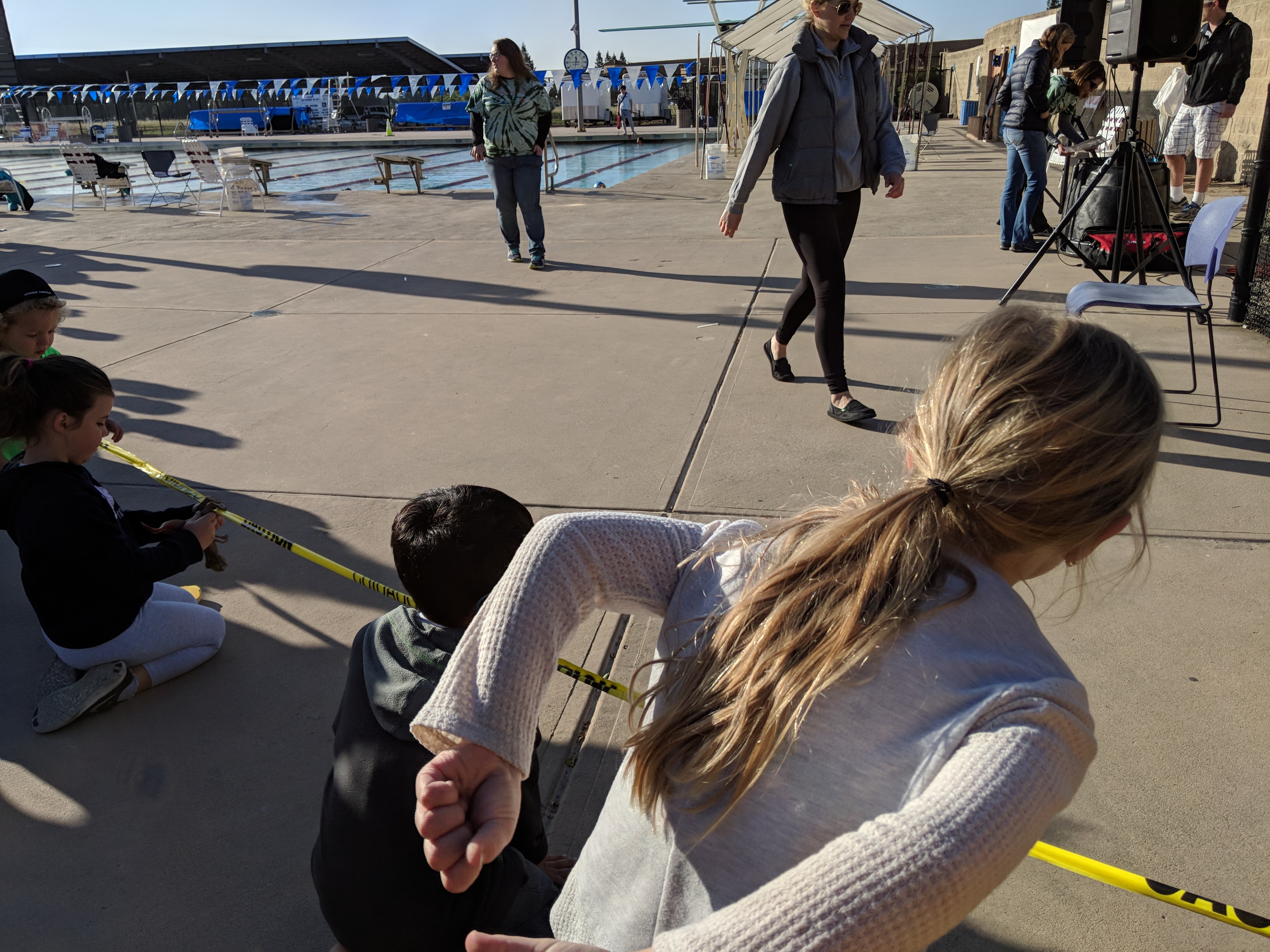
Post-tri party
Finally, one of the biggest differences between the SC triathlon last summer and the MH triathlon earlier this month was in its post-race offerings. I don’t recall there being much after the SC triathlon last year; basically, if you wanted to stick around for the awards ceremony, you could, but otherwise, once your child completed his/her race, you were free to go. If I recall correctly, there really wasn’t that much else or left to do.
In contrast, it almost seemed like the real party was just beginning to start after kids completed the Splash 2 Dash triathlon. The City of Morgan Hill hosted several community partner booths that had games and crafts set up for the kids, which helped make the morning that much more fun and memorable. Once kids finished their triathlon, they were free to walk over to the vendor booths to make their own handprint tiles, courtesy of Home Depot; to make some bookmarks, courtesy of a second-chance organization; to get their hair spray-painted crazy colors, courtesy of a local hair salon; to play a spin-the-wheel game at the local Second Harvest Food Bank table, and more. Games and crafts: this is the stuff six year-old girls’ dreams are made of, folks! If memory serves, I think the City of Morgan Hill also had a table set-up, advertising their summer programs and camps, and someone else — maybe the YMCA? — had set up a station giving kids and families fruit kabobs. My child spent fewer than ten minutes actually doing her race, but we easily dropped another hour afterward at the race venue because she was having so much fun doing all this other stuff.
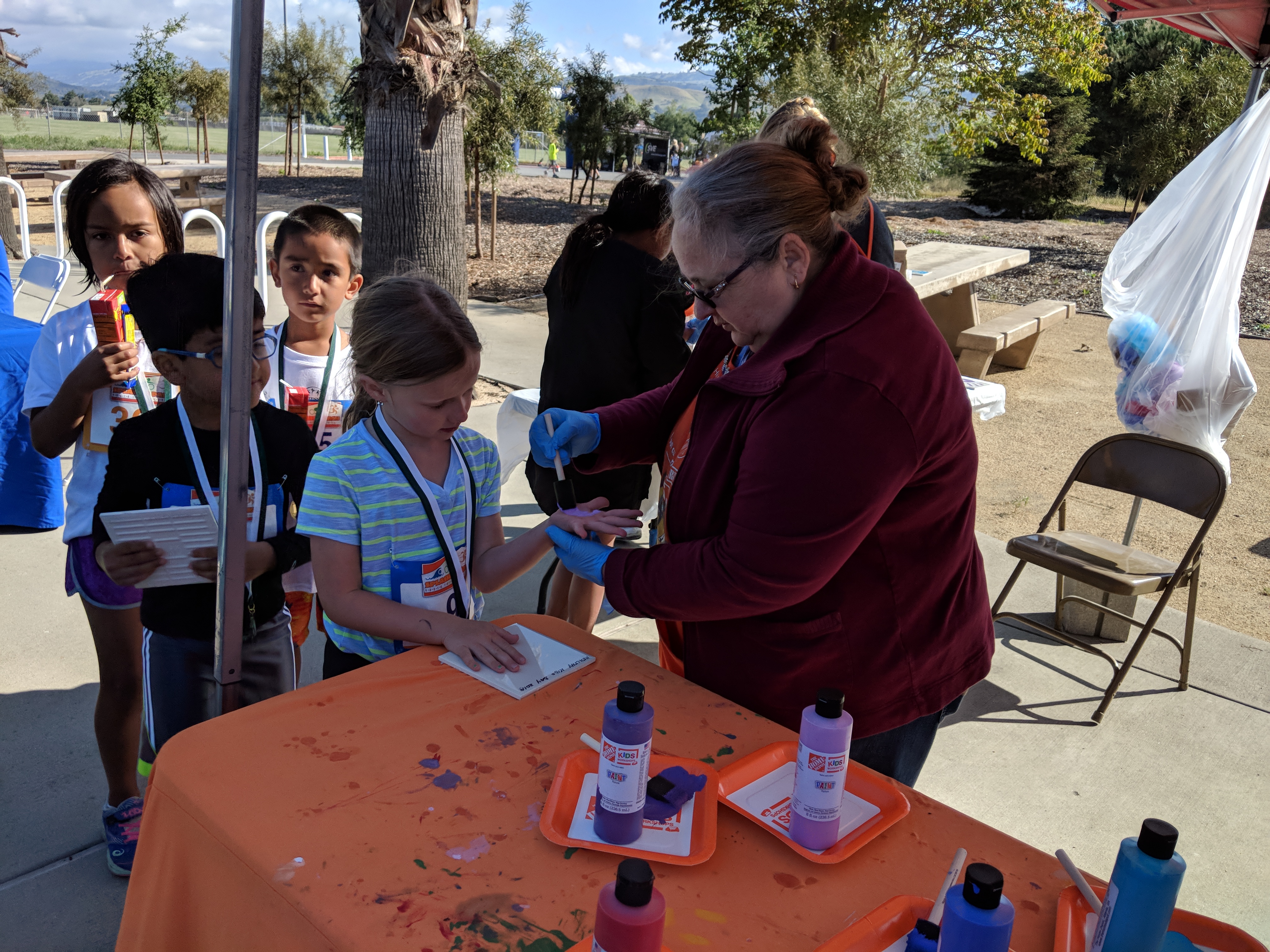
Amenities
Both the SC and the MH triathlons gave participants similar amenities: a medal for participating and a t-shirt. I think the SC tri may have also given the kids a reusable grocery bag, too.
Registration Costs
If memory serves, perhaps because of when I registered her for the SC race last year, the SC tri was significantly more expensive than the MH triathlon. In addition, the SC triathlon mandated that all participants pay for a one-year membership to USAT, presumably to help guarantee insurance coverage for the day of the event. In contrast, the MH triathlon — perhaps because it was organized through the city of Morgan Hill and (presumably) wasn’t a sanctioned USAT event — didn’t require USAT membership/insurance, which ultimately affected the lower price tag. The SC tri had participants ankle-chipped for the races, whereas the MH didn’t have any chip-based timing to speak of, though participants still got official (gun-based) times.
Summative Commentary
So parents out there – if you’re looking for a fun and low-key triathlon for your child, I’d definitely recommend giving the Splash 2 Dash event in Morgan Hill a try. The atmosphere wasn’t cut-throat competitive; the kids all seemed to enjoy the awesome post-race party and craft tables; and it was extremely family-friendly. In retrospect, it would have been manageable to bring the two year-old and wrangle her while waiting around and then cheering for big sister.
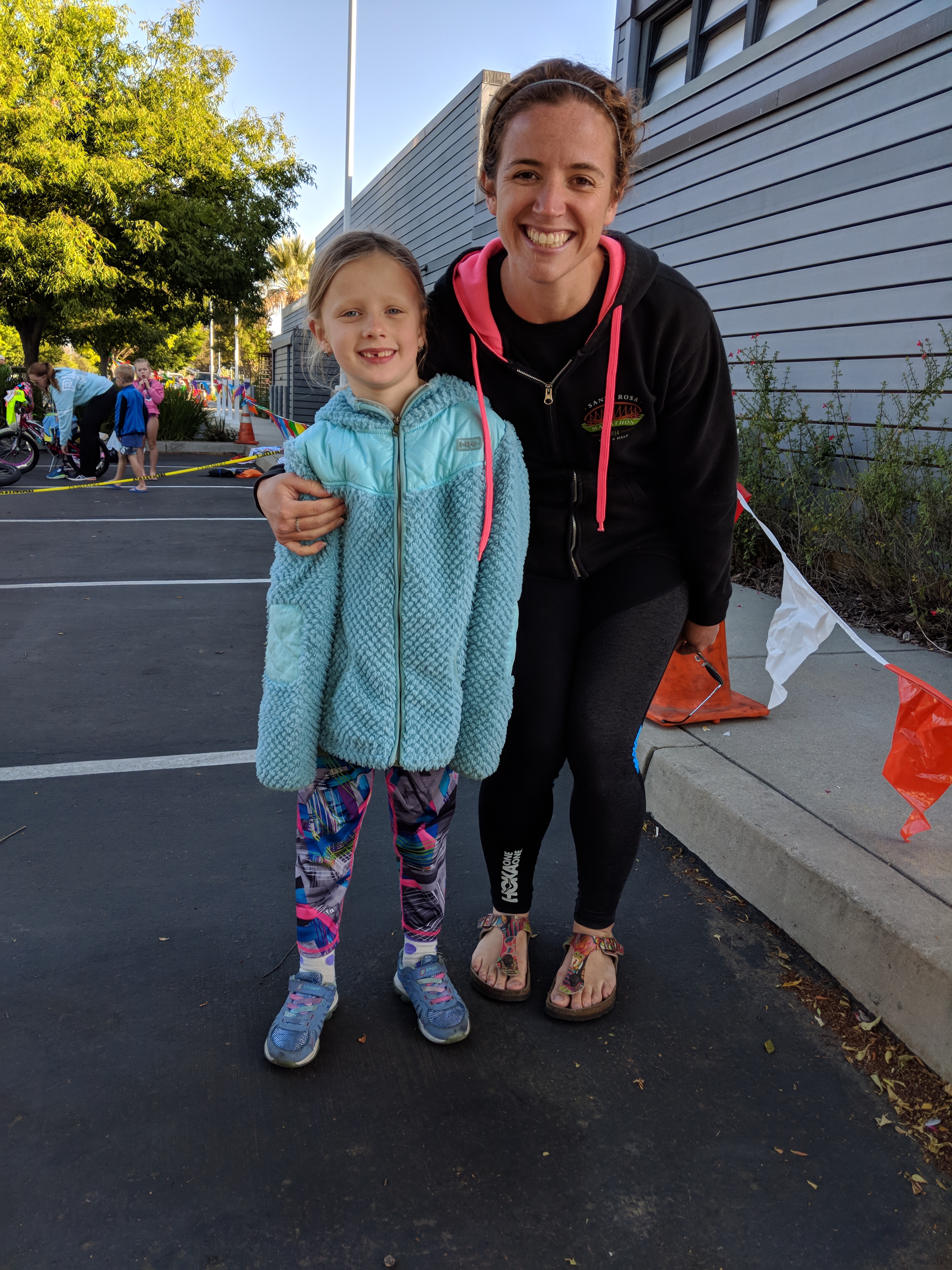
Realistically speaking, too, your child will probably have much more favorable weather in early May than you will mid-August at the SC triathlon.
My daughter had a great time at the Morgan Hill triathlon and didn’t hesitate to say that she wanted to do it again… but you can glean that from her commentary below.
—-
You did your second triathlon ever, your first in 2018, a couple weeks ago. What do you remember most about your experience?
Not really anything. It was kinda the same as the last one but more fun. (Eds. note: honesty).
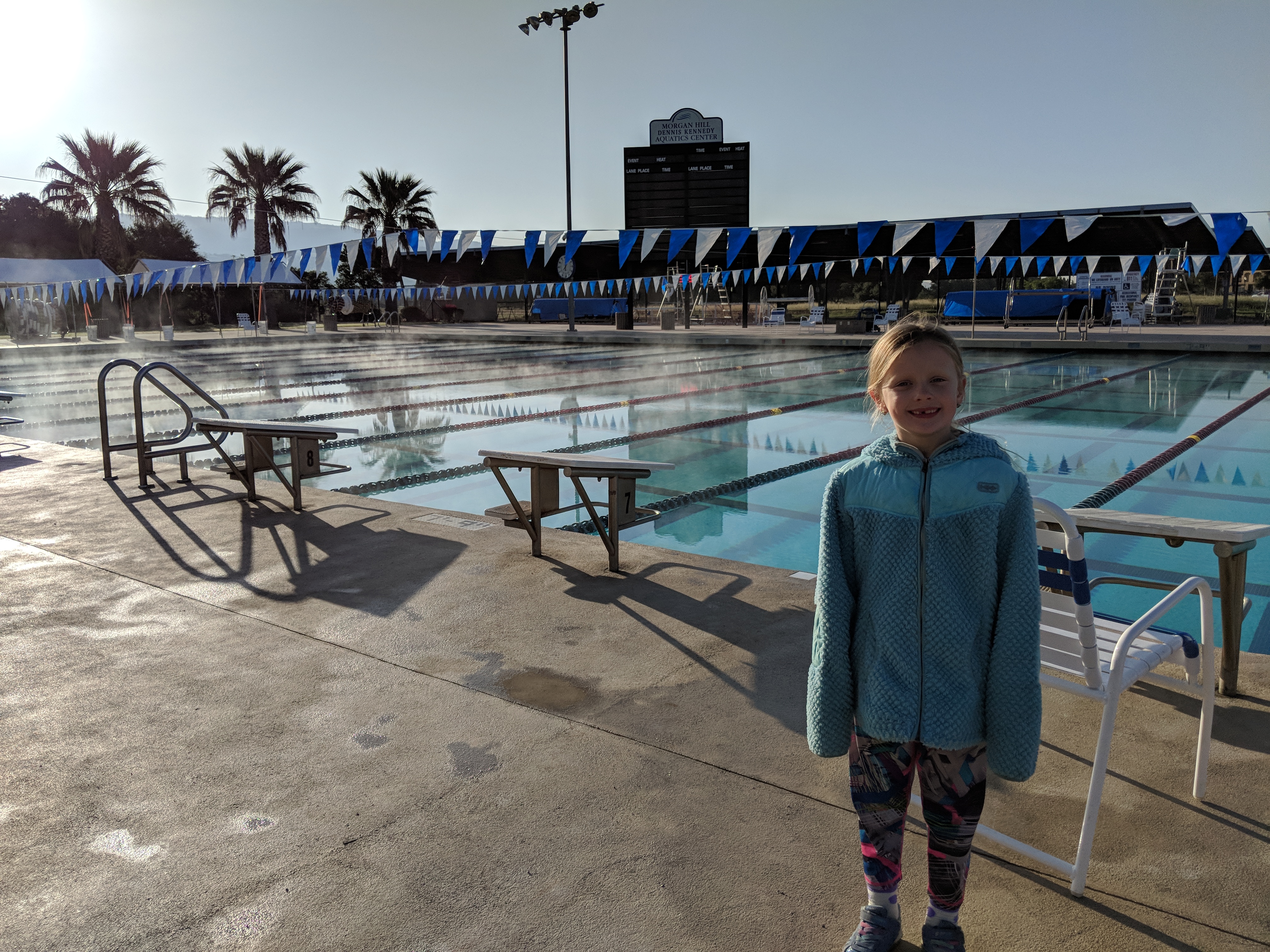
Why did you want to do another triathlon?
Because I wanted to do one triathlon per year?
Did you train for this tri any differently than the one you did last year?
Yes, because I did some, a lot, of running at my school. Like we ran around the track three, two, or one times, and yeah. Yeah! That’s running!
What was your favorite part of this triathlon?
Seeing K. in the triathlon that I’m doing. Doing it with him was a part that I liked.
Tell me about your swim. How long was it? What type of stroke did you do? And why?
My swim? Oh, like only a few seconds because we only did one lap. I did … I think I did freestyle? I don’t know, I just picked it. I like every stroke of swimming, so that’s the stroke I picked.
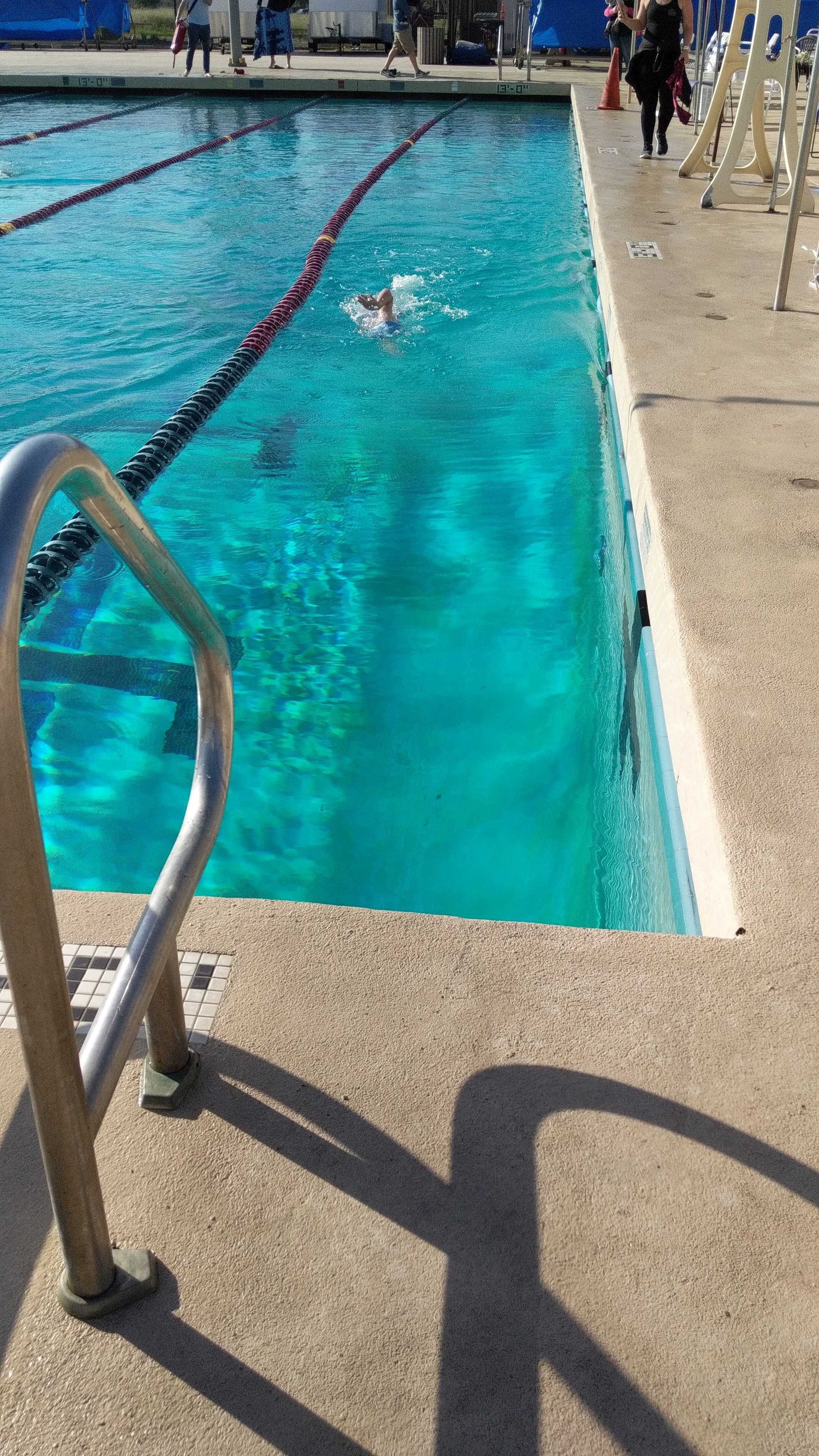
After you finished the swim, you had to get out of the pool, get dried off, and get up on your bike. How was that? Were you cold when you were riding your bike?
A little tricky cuz I had to go quick and usually I don’t go that quick. Usually I just, like, I take my time and hurry it up a little. That time, I had to hurry it up a lot. (I wasn’t cold) because it was a hot day. (Eds. note: I think it was when in the 50s).
Can you tell me about your bike ride?
That was a little tricky because there was a little girl who had a bike but a little more smaller than mine, and she was super quick! She saw me behind her, and she speeded up, and then I seemed to pass her after a little while. (Eds. note: A was the second girl out of the pool for her AG and caught the first girl later, presumably on the bike. As a parent, it’s so interesting to hear how A talks so casually about competition. It’s evident that she wants to work hard to be the best she can be, and she likes competing against others to be the fastest, but when she talks about it, she couches everything in having fun. It’s not a mutually exclusive enterprise for her).
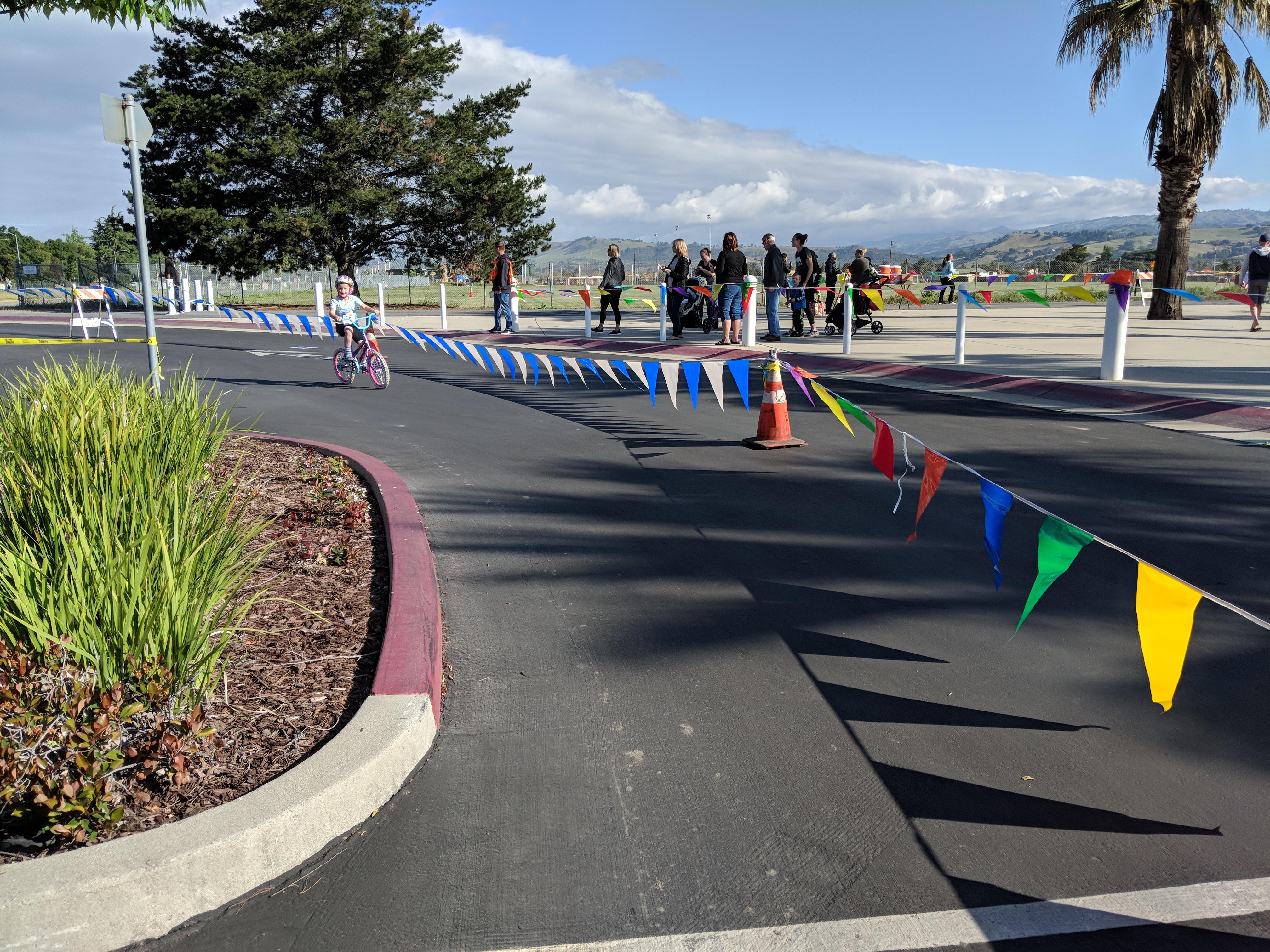
Once you finished your bike ride, you had to drop-off your bike and then start running. What was that like? How did your body feel?
Tired, wiggly. And sleepy! And a little sleepy!
What was your run like?
My run? That was really tiring! But once I kept running, I mean jogging, it didn’t feel so awful.
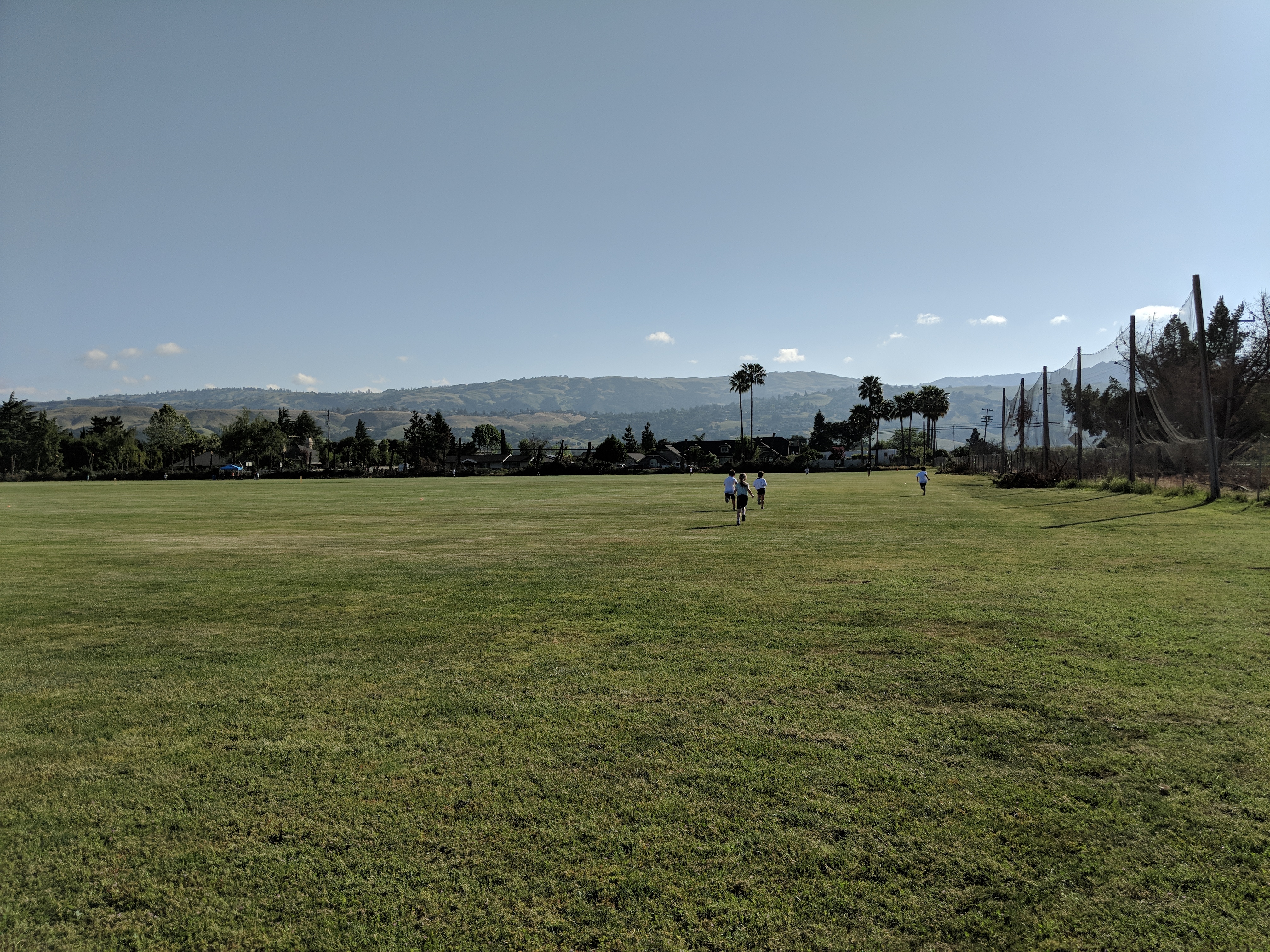
At the very end of your run, you approached the big finish line arch. What was it like to see the finish line? How did you feel when you crossed it?
I was like smiling because you were telling me, “you can do it!” or something like that. I was super happy that I ran a little more quick and I didn’t feel that tired. (I felt) super happy and tired (when I crossed the finish line).
Did you earn anything special for completing this triathlon?
A medal, some snacks, hair paint, a handprint on a piece of glass. Yeah, that’s all I earned. I don’t remember the rest.
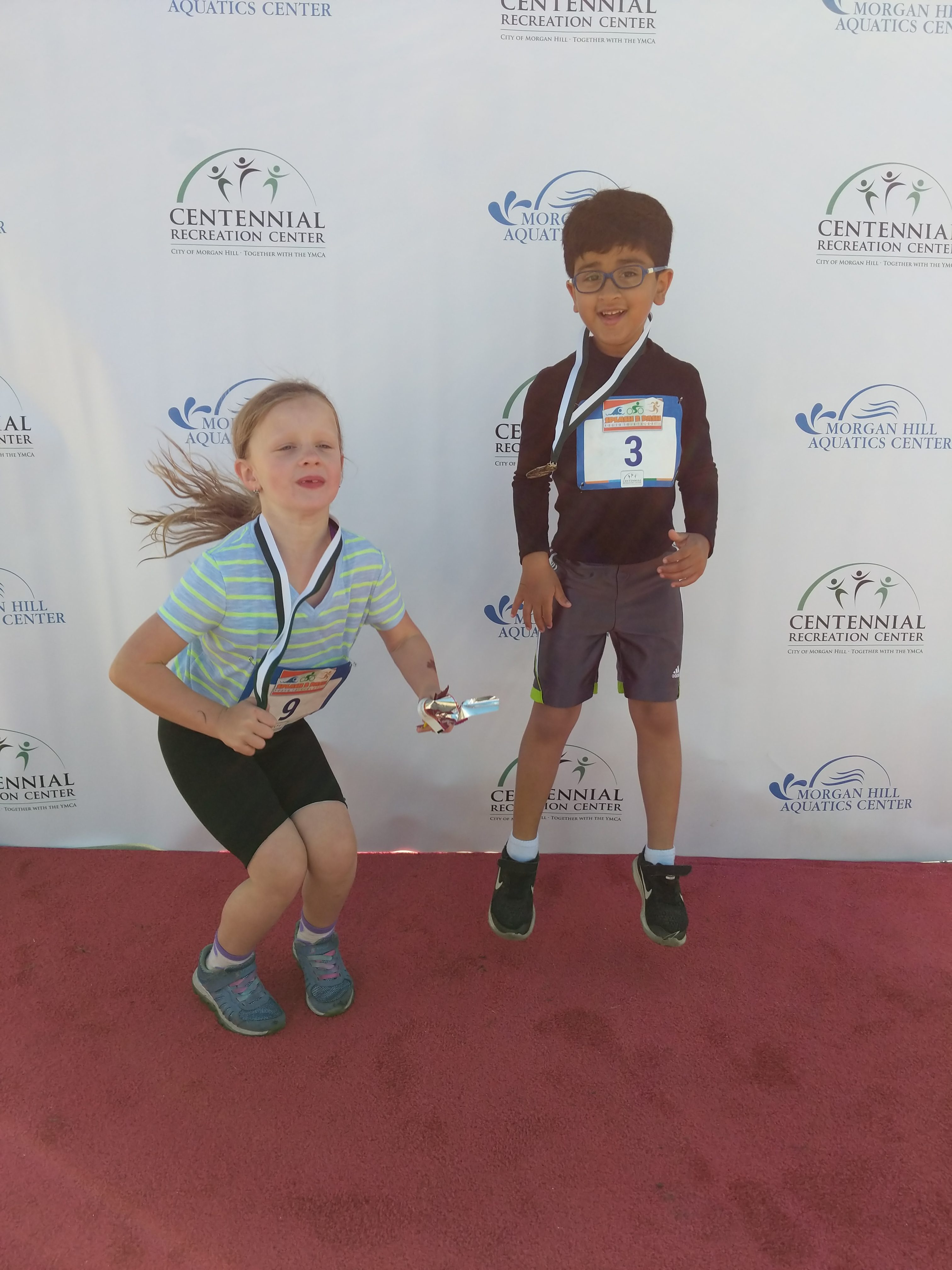
How did you do at your race overall? How did you feel when you finished?
I was tired! I was happy, a little. I was happy, but I didn’t really crack that much of a big smile.
Which triathlon did you like more, the one in Morgan Hill or the one in Santa Clara?
The one with K. Because it was with my friend! And, yeah. And they gave me a green medal, and I thought the green meant for luck. (Eds. note: proof positive that these things are always “funner with another”).
What type of advice would you offer to kiddos like you who may want to do their first triathlon?
I would say, well, you guys should really do this because it’s awesomely fun! I’ve done it before, and it’s like super fun and awesome that you should really try it out with your friends. You should tell your friends the day you’re doing it so they can do it. It’s awesome and fun! Get out there, and have fun in that triathlon. When you’re done, you feel so strong, like never before. (Eds. note: TRUER WORDS NEVER SPOKEN).
I remember we stayed at the aquatic center a long time after you finished because there were so many crafts and stuff to do. What was your favorite part about that?
I liked it when they did my hair spray colors. And along with that, I liked it when they told us that when you put up the piggie face, that the hair spray they put on your hair won’t get into your face. (Eds. note: It took me a while to figure out what the “piggie face” was).
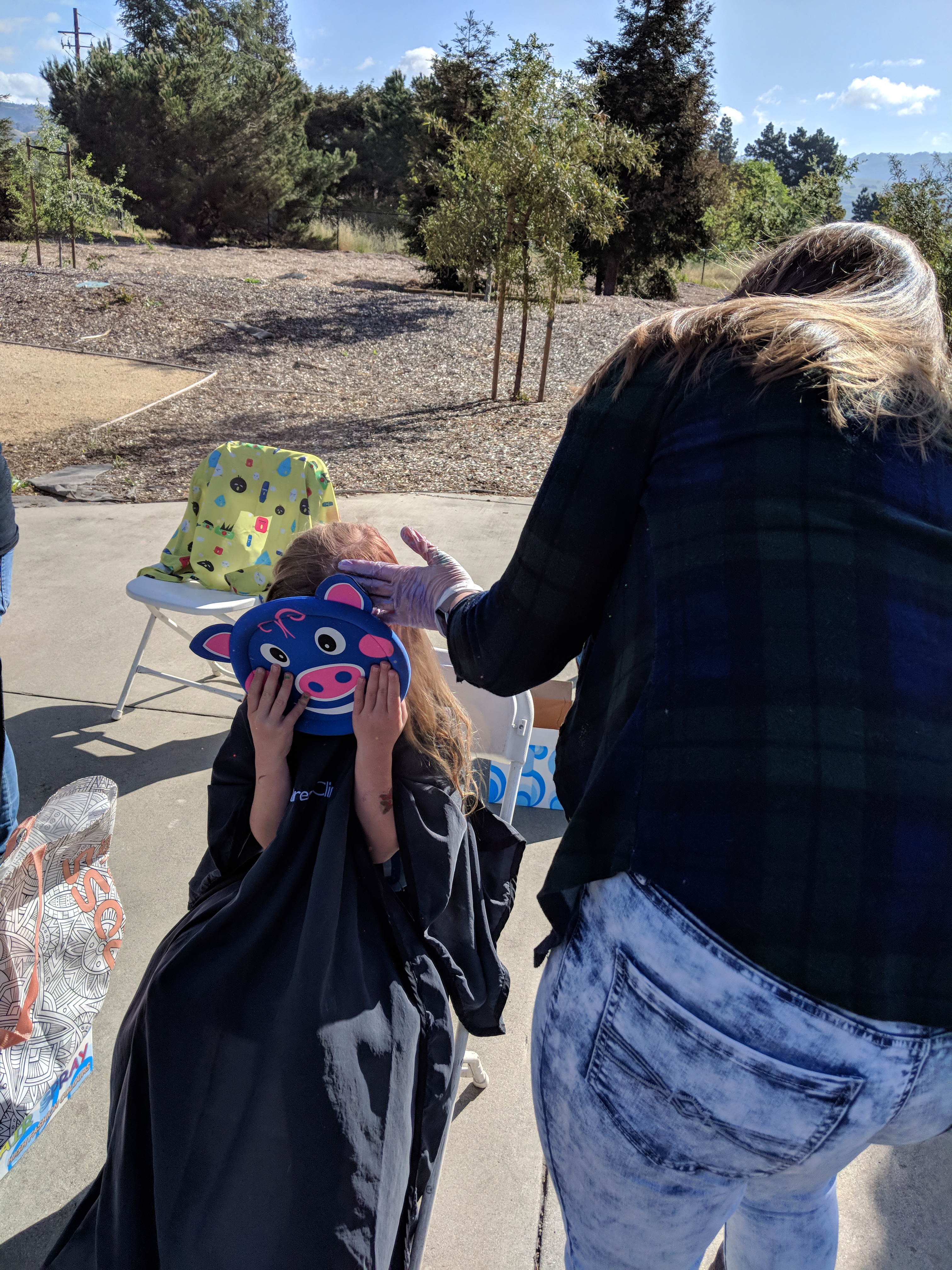
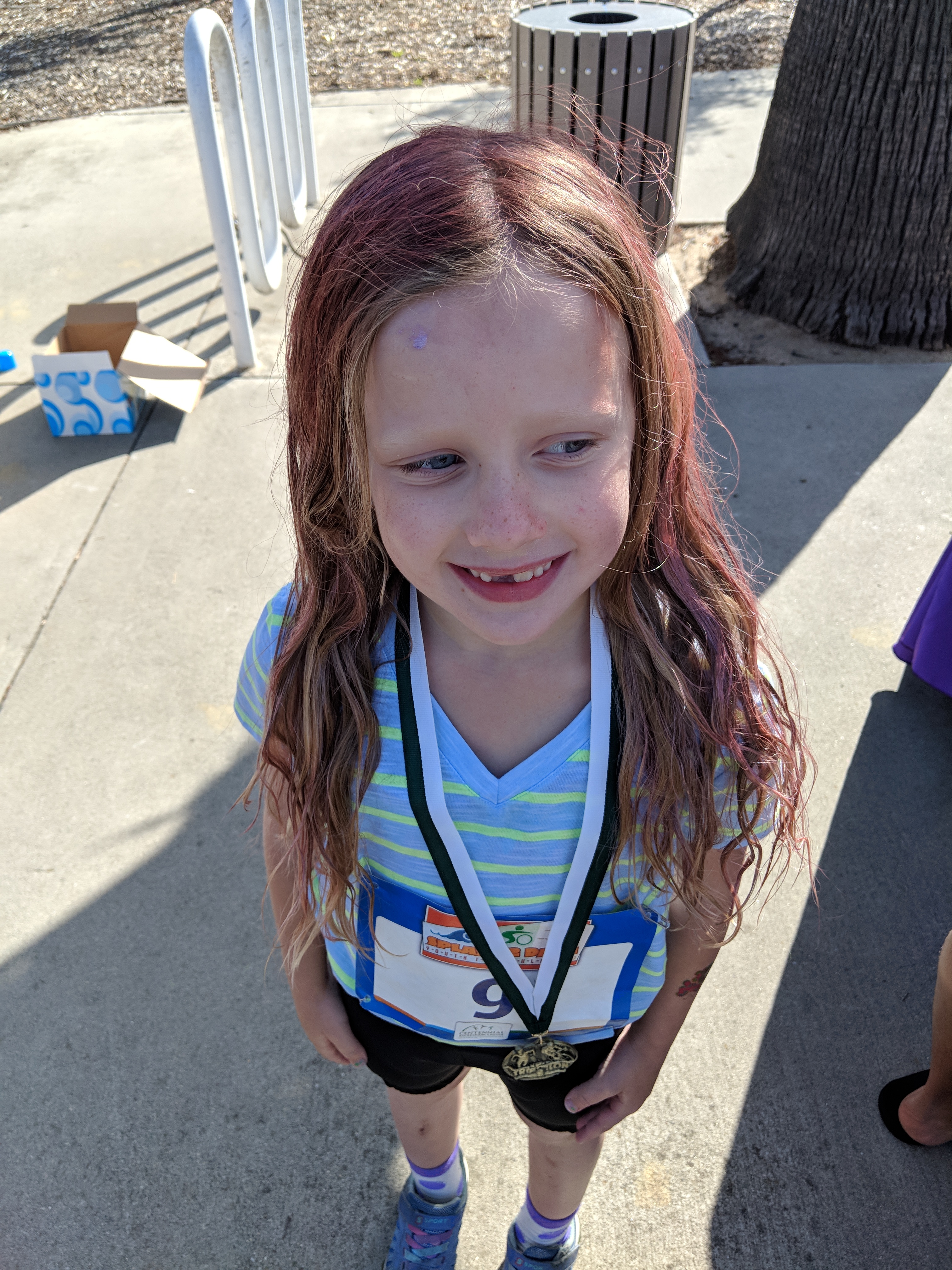
Do you think your sister should do a tri once she gets a little bigger?
Yeah! Yeah, because then she can get a lot of strength and it’s ok if she gets tired ‘cuz after a few days later, she’ll feel not that tired. Or when she gets home, she will not be that tired.
Do you think your dad or I should do a tri sometime?
Yeah! Cuz I haven’t seen Dad do a triathlon before. And I haven’t seen you do a triathlon before. (Eds. note: gauntlet thrown, kid. Did it just get warm in here?).
Was there anything you didn’t you like about this triathlon?
Um… no! Cuz it was super fun and that was my second triathlon and I did a pretty good job on it. The second triathlon in my life. And my sister, I’m sure when my sister does a triathlon like that one, she will have a lot of fun! And I’ll tell her that I had a blast. (Eds. note: she did well compared to her peers. I think she was in the top 3 or 5 for 6 and unders and the first OA female for her AG. I told her, and she cared for about .2 seconds. Kids are great).
What did you like the most about this triathlon?
Doing it with my friend!
Do you want to do another tri this year?
Yes, with my swim buddy, Z. (Eds. note: Z is a friend from her swim team who travels, with her family, all over the Bay Area to compete. Her older sister is a serious youth triathlete and has recently qualified for nationals).
Do you have anything else that you’d like to add?
Maybe. (explaining what that question means). … (thinking) … No.
Alright!
While my own personal interest in pursuing a tri is very, very small — perhaps remote would be a more appropriate description — I do love watching her have fun and compete. Children can be such fantastic teachers.
SO PROUD!
